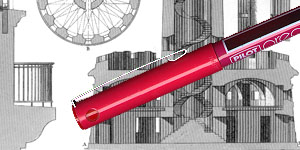


The Eyes of a Stranger
Besides putting us in an artificial world, the new technology could put us in the real world---although not the one we're used to. For example, now that mobile robots are becoming competent enough and cheap enough to interact with the world in interesting, nontraditional ways, it is becoming thinkable to control them using telepresence. By linking the robot's senses to some of our own, and by damping out our own senses, we can temporarily fall into the belief that we are the robot. By linking our actions to the robot's actions we can then control it. The feeling is indescribable.Imagine that you are in a room with a visor over your eyes and equipment attached to your hands. There is also an inert humanoid robot in the room. As you begin to move your head, the robot's head moves in lockstep and you immediately see the room from a new perspective. Since you can see nothing but what the robot's cameras see, you soon start thinking of yourself as being where the robot is, watching a strange person (that is, you) moving its head. Moving your arms moves the robot's arms, which soon start to feel like your own arms, while the corresponding gestures of the person across the room come to seem more and more like a puppet play. If the interaction is seamless enough, you eventually forget your own body and imagine yourself present in the robot---you become telepresent.
Now imagine the consequences. If you are a surgeon, say, there needn't be any connection in space between you and your patient. You could be in the same room, in the next room, or on another continent. If you are a miner, you needn't be anywhere near the ore. You could be telepresent in a robot mining riches deep in the ocean---or deep under the earth or on the moon. Nor would you have to remain your human size. You could will yourself into a kilometer-long robot body in orbit around the planet. You could operate on human cells using microtools. Or you might monitor aircraft in a few cubic kilometers of airport airspace.
These and other uses might become common in the decades ahead. Soon we might even have telepresence toys for children. Junior explorers could have a tiny robot equipped with tiny cameras and a radio link. They might use it to explore the garden through the eyes of a mouse. As the technology progresses, the perspective could eventually shrink to a worm's eye view, then a microbe's. These robots in the playpen might prepare children for the multiplying telepresence tools available to general society. Reality will never be the same again.